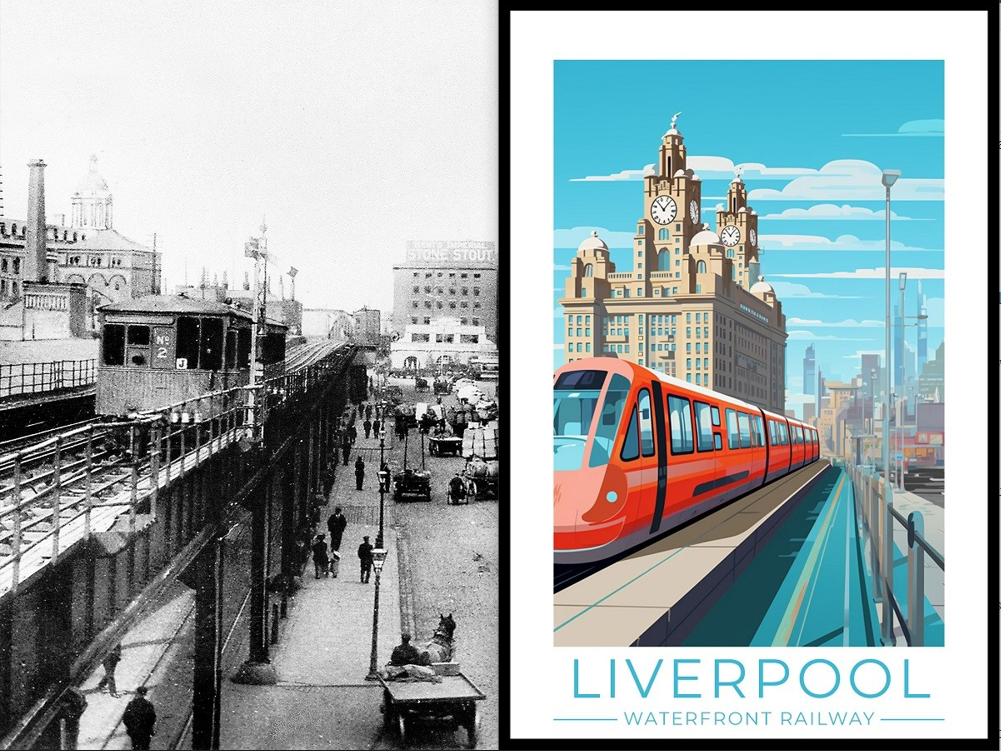
Are you familiar with any of these iconic, lost landmarks? Well, Liverpool-based clothing brand Chums, has reinvented these iconic sites with the help of artificial intelligence, giving a unique perspective as to what these landmarks may have looked like in these contemporary times.
As part of their innovative campaign, Chums has conducted research into the rich histories and cultures surrounding these five famous UK structures and their respective cities to determine why they were so formerly cherished, as well as how shifting circumstances have contributed to their demise.
Discover the stories behind these dismantled landmarks as Chums use AI creativity to bring them back to life. See how these structures, once beloved, might have looked in today’s world. It’s a journey that sparks conversations about preserving our cultural history and the exciting role modern innovation plays.
Liverpool Overhead Railway

Opening in 1893, the Liverpool Overhead Railway emerged as a trailblazing marvel, spanning approximately 6.5 miles (10.5 kilometres) along the Liverpool docks and being one of the first fully electrified rail systems in the world.
The railway, also known as “The Dockers Umbrella” for the shelter it provided for pedestrians below, was elevated above ground level using iron columns, allowing the roads and streets below to be undisrupted by the tracks and facilitating the transportation of cargo, workers, and commuters to the various docks along the river Mersey.
Unfortunately, the overhead railway was only operational until 1956, when the decision was made to close the railway due to financial difficulties. The structure was dismantled, and the last remnants were removed in the early 60’s.
Contemplating an alternate destiny, AI predicts the railway would have a modernised aesthetic – a chic and refined exterior for the trains, complemented by expanded tracks featuring spacious platforms, ensuring the safety of standing commuters.
Dome of Discovery and Skylon, London
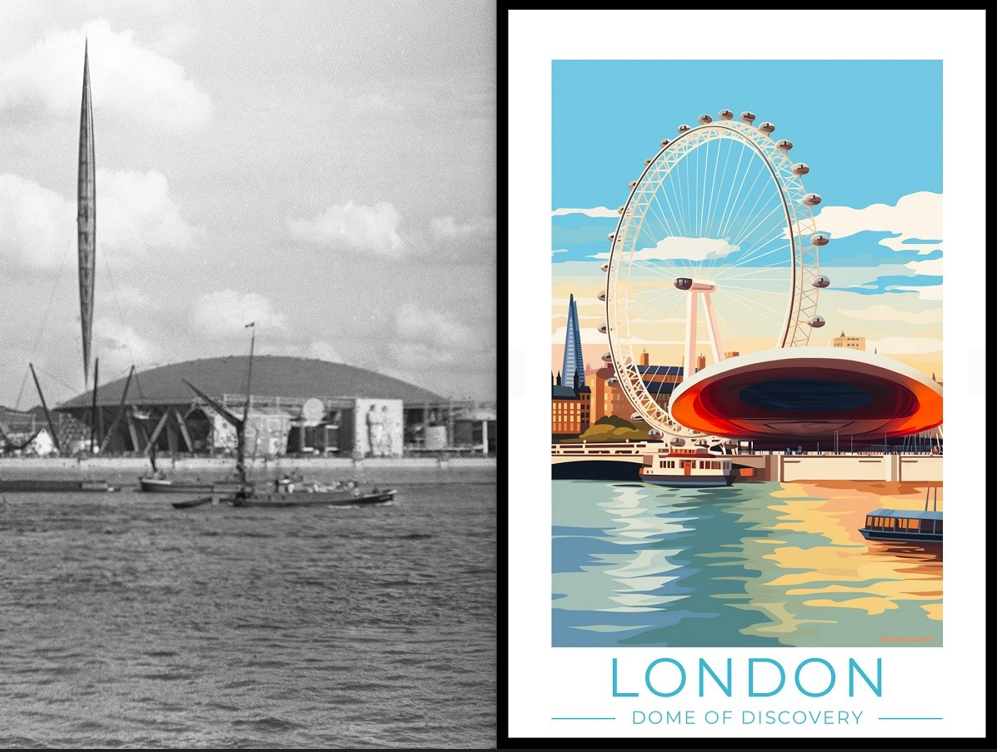
Nestled along the picturesque South Bank of London, the Dome of Discovery and Skylon were specifically crafted for the 1951 Festival of Britain. This grand event was orchestrated to showcase the pinnacle of British accomplishments in arts, science, technology, and industry, commemorating the centenary of the renowned Great Exhibition of 1851.
The Dome of Discovery encapsulated the very spirit of the festival within its vast, domed architecture, then the largest of its kind. Designed to house exhibits, it stood as a testament to the creativity and innovation being showcased within its walls.
Conversely, The Skylon’s purpose was more of symbolism than practicality, a beacon of future aspirations and post-war optimism. Its tall, sleek design was a visual manifestation of the collective vision for a progressive and promising tomorrow, making it an iconic representation of the Festival of Britain’s forward-looking spirit.
Despite their significance and favourable reception, both structures were only intended to be a temporary attraction and remained standing for 11 months post-festival before they were dismantled.
Retaining the essence of the dome from 1951, AI has seamlessly transformed its exterior into a sleek, modern structure. Its versatile design could serve as an arena for events or continue as a distinguished venue for exhibitions, be it art or industry. The Skylon has been replaced with the iconic London Eye, a landmark which stands on the South Bank today.
Trams on Queen Street, Cardiff
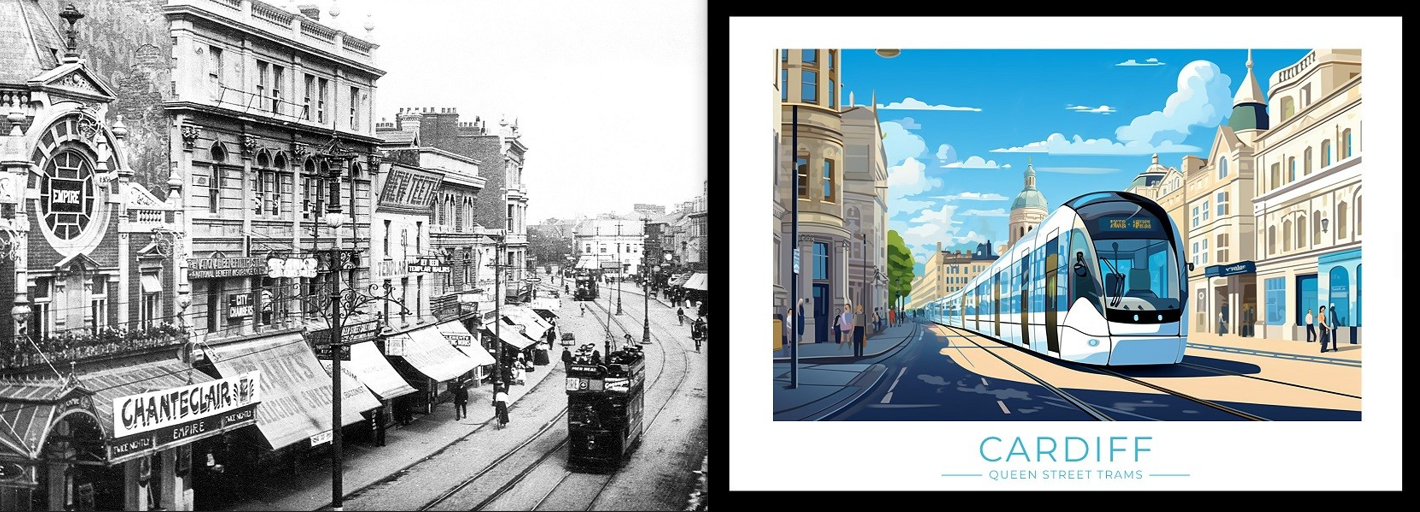
In 1872, Cardiff welcomed the advent of horse-drawn trams, precursors to their modern counterparts, which, like the trams of today, ran on tracks embedded in the road surface. The emergence and development of electric trams in the late 19th century marked the end of the horse-drawn period and the beginning of a more advanced era for the city’s tram networks.
The peak of Cardiff’s tram system occurred during the decades of the 1920s and 1930s. During this peak period, the network covered much of the city, connecting the various districts and significantly enhancing the efficiency of transportation services.
By the mid-20th century, trams were on the decline as other modes of transportation became increasingly popular, tram services were steadily reduced, and the Cardiff tram system was eventually shut down in 1950.
Similar to the Liverpool Overhead Railway, AI has imagined the modern version of the Cardiff tram system to look much like the ones that still run today. Such as the trams in Manchester and Edinburgh, this modern tram design boasts a streamlined appearance with interconnected carriages, a departure from the 19th and 20th-century counterparts that bore a closer resemblance to double-decker buses.
Portobello Pool, Edinburgh
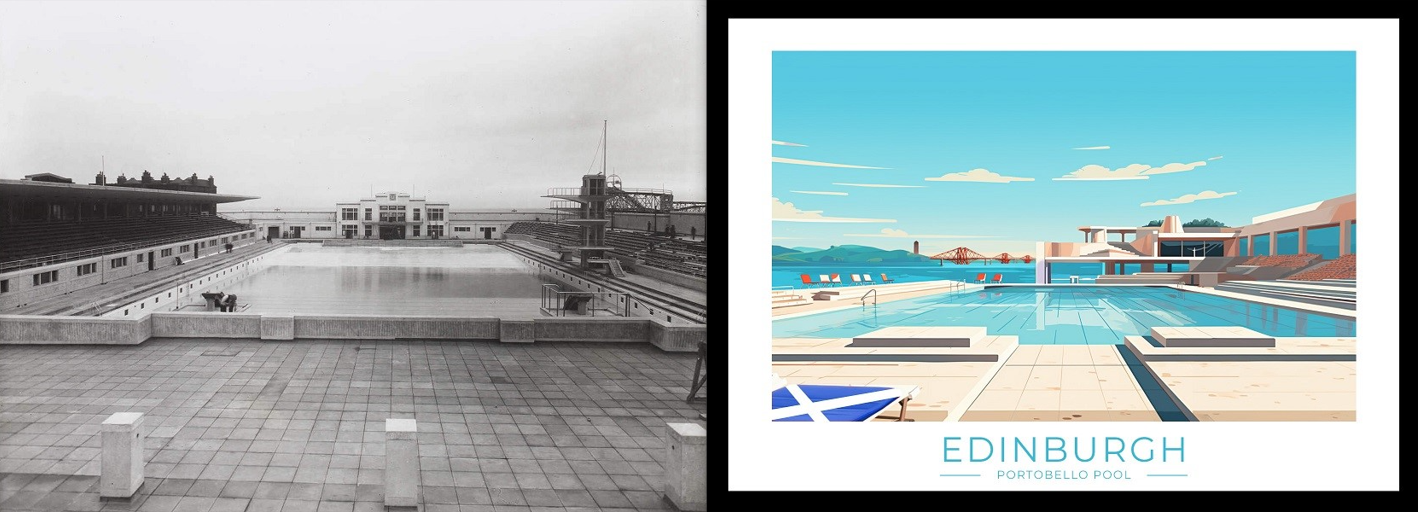
Nestled in the coastal enclave of Portobello, Edinburgh, this pool made its debut in 1936, showcasing a captivating art deco facade. Beyond its aesthetically pleasing exterior, the pool housed heated facilities, high diving boards, and a generously sized swimming area within its walls.
The pool was a popular addition to the community and often hosted swimming galas and diving shows, with the heated outdoor pool being a popular attraction even in colder seasons. However, the landmark’s popularity declined during the 1970’s due to increasing interest in holidays abroad, and the pool was forced to eventually close in 1978.
The contemporary reinterpretation of this iconic pool now features a multi-level observation deck an expanded and spacious deck area complete with sun loungers for spectators, all complemented by a stunning panorama of the North Sea.
Margate Jetty, Kent
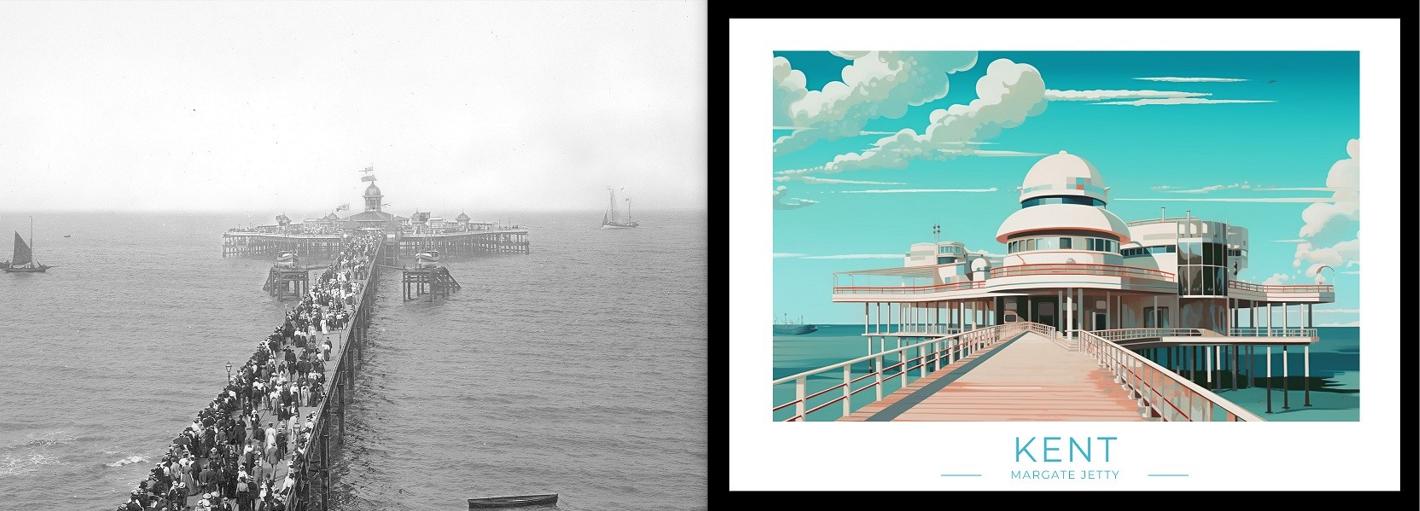
Built in the 19th century as a landing stage for steamboats, Margate Jetty underwent a series of enhancements and expansions in response to the growing popularity of the seaside town. Challenges emerged with the original wooden structure of the jetty, which proved susceptible to unfavorable weather conditions, necessitating frequent repairs. In a pivotal moment in 1855, the jetty made history by becoming the world’s first iron seaside pier, and shortly thereafter, its distinctive octagonal-shaped pierhead was constructed.
Throughout both the First and Second World Wars, the jetty served as a crucial loading point for Allied vessels. Unfortunately, a fire in 1964 followed by a destructive storm in 1978 left the jetty in a state of disrepair. Despite several controlled explosions aimed at demolishing the remaining structure, it wasn’t until 1998 that the last remnants of the jetty were finally eradicated.
AI has bestowed upon the jetty a modern and futuristic transformation, featuring a multi-level pierhead adorned with domed roofs, floor-to-ceiling glass windows, and a series of balconies that would undoubtedly provide breathtaking views of the sea.
Paul Gray, Marketing Director of Chums adds: “We hope that merging nostalgia with AI delivers a visual delight that sparks imagination. These landmarks, once the heartbeat of their communities have lost their resonance over the years, so we thought through AI, we could rekindle the flame. Envisioning a future where these landmarks could have a place in modern-day conversations, connecting generations and preserving the essence of our shared history.”
For more information and to explore the full campaign, please visit
https://www.chums.co.uk/blog/the-cities-of-our-past-reimagined








